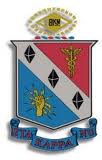| Line 1: | Line 1: | ||
| − | <div style="font-family: Verdana, sans-serif; font-size: 14px; text-align: | + | <div style="font-family: Verdana, sans-serif; font-size: 14px; text-align: center; width: 70%; margin: auto; border: 1px solid #aaa; padding: 1em; text-align:center;"> |
{| | {| | ||
|- | |- | ||
| − | |''' | + | | |
| − | | [[Image: | + | '''This [[Collective Table of Formulas|Collective table of formulas]] is proudly sponsored'''<br> '''by the [http://www.facebook.com/hkn.beta Nice Guys of Eta Kappa Nu].''' <br><br> Visit us at the HKN Lounge in EE24 for hot coffee and fresh bagels only $1 each! |
| − | + | ||
| + | | [[Image:HKNlogo.jpg]] | ||
|} | |} | ||
| − | </div> | + | </div> |
Revision as of 06:25, 5 April 2012
|
This Collective table of formulas is proudly sponsored |

|
| Continuous-Space (2D) Fourier Transform (CSFT): definition and inverse transform | ||
|---|---|---|
| Forward transform | $ \mathcal{F}(u,v) = \int_{-\infty}^{\infty}\int_{-\infty}^{\infty}{f(x,y)e^{-j2\pi(ux+vy)} dxdy } $ | (info) |
| Inverse transform | $ f(x,y) = \int_{-\infty}^{\infty}\int_{-\infty}^{\infty}{F(u,v)e^{j2\pi(ux+vy)} dudv } $ | |
| 2D Continuous Space Fourier Transform(CSFT) Properties | ||||
|---|---|---|---|---|
| $ \displaystyle f(x,y) $ | $ \longrightarrow $ | $ \displaystyle F(u,v) $ | ||
| Linearity | $ \displaystyle af_1(x,y)+bf_2(x,y) $ | $ \displaystyle aF_1(u,v)+bF_2(u,v) $ | ||
| Scaling | $ f(\frac{x}{a},\frac{y}{b}) $ | $ \displaystyle|ab|F(au,bv) $ | ||
| Shifting | $ \displaystyle f(x-x_o,y-y_o) $ | $ \displaystyle F(u,v)e^{-j2\pi(ux_o+vy_o)} $ | ||
| Modulation | $ \displaystyle f(x,y)e^{j2\pi(xu_o+yv_o)} $ | $ \displaystyle F(u-u_o,v-v_o) $ | ||
| Reciprocity | $ \displaystyle F(x,y) $ | $ \displaystyle f(-u,-v) $ | ||
| Other Properties | ||
|---|---|---|
| Parseval’s relation | $ \int_{-\infty}^{\infty}\int_{-\infty}^{\infty}{|f(x,y)|^2dxdy }=\int_{-\infty}^{\infty}\int_{-\infty}^{\infty}{|F(u,v)|^2dudv } $ | |
| Initial Value | $ F(0,0)=\int_{-\infty}^{\infty}\int_{-\infty}^{\infty}{f(x,y)dxdy } $ | |
| Symmetry Properties for Continuous Space Fourier Transform | |
|---|---|
| If f(x,y) is real, the magnitued of F(u,v) is an even function; the angle of F(u,v) is an odd function. | |
| $ \displaystyle F(u,v)=A(u,v)e^{j\theta(u,v)} $ | |
| $ \displaystyle F(u,v)=F^{*}(-u,-v) $ | |
| $ \displaystyle A(u,v)=A(-u,-v) $ | |
| $ \displaystyle \theta(u,v)=-\theta(-u,-v) $ | |
| $ f(x,y)=2 \int_0 ^{\infty}\int_{-\infty}^{\infty}{ A(u,v)cos[2 \pi(ux+vy)+ \theta(u,v)] dudv} $ | |
| Separability | ||||
|---|---|---|---|---|
| $ \displaystyle g(x) $ | $ \longrightarrow $ | $ \displaystyle G(u) $ | ||
| $ \displaystyle h(x) $ | $ \longrightarrow $ | $ \displaystyle H(v) $ | ||
| $ \displaystyle f(x,y) $ | $ \longrightarrow $ | $ \displaystyle F(u,v) $ | ||
| $ \displaystyle f(x,y)=g(x)h(y) $ | $ \longrightarrow $ | $ \displaystyle F(u,v)=G(u)H(v) $ | ||
| For example, | ||||
| $ \displaystyle rect(x,y)=rect(x)rect(y) $ | $ \longrightarrow $ | $ \displaystyle sinc(u)sinc(v)=sinc(u,v) $ | ||
- Notes: If we are trying to draw rect(x,y) from a top view, it will just look like a square. In the 3D plot, keep the top view as a base, making the height as 1. The plot is a cube. Similar as sinc(u,v).
| $ \displaystyle circ(x,y) $ | $ \longrightarrow $ | $ \displaystyle jinc(u,v) $ |
- Notes: if we are trying to draw circ(x,y) from a top view, it will look like a circle with a radius of ½. In the 3D plot, we keep the top view as a base, making the height as 1. The plot is a cylinder.
| Important Continuous Space Fourier Transform Pairs | |||
|---|---|---|---|
| $ \displaystyle x(t) $ | $ \longrightarrow $ | $ \mathcal{X}(f) $ | |
| $ \displaystyle \delta (x,y) $ | $ \displaystyle 1 $ | ||
| $ \displaystyle 1 $ | $ \displaystyle \delta (u,v) $ | ||
| $ \displaystyle rect(x) $ | $ \displaystyle sinc(u) \delta (v) $ | ||
| $ \displaystyle \delta (x) $ | $ \displaystyle \delta (v) $ | ||
| $ e^{j2\pi(u_ox+v_oy)} $ | $ \displaystyle \delta (u-u_o,v-v_o) $ | ||
| $ \displaystyle cos[2\pi(u_ox+v_oy)] $ | $ \frac{1}{2} [\delta (u-u_o,v-v_o)+\delta (u+u_o,v+v_o)] $ | ||
| 2D Continuous Space Fourier Transform in Polar Form | ||||
|---|---|---|---|---|
| $ \displaystyle x=r \cos (\theta) $ | $ \longrightarrow $ | $ \displaystyle u= \rho \cos (\phi) $ | ||
| $ \displaystyle y=r \sin (\theta) $ | $ \longrightarrow $ | $ \displaystyle v= \rho \sin (\phi) $ | ||
| Forward transform | $ F(\rho,\phi)=\int_0 ^{2\pi}\int_0 ^{\infty}{f(r,\theta)e^{-j2\pi\rho r cos(\phi -\theta)}r dr d \theta } $ | |
| Inverse transform | $ f(r,\theta)=\int_0 ^{2\pi}\int_0 ^{\infty}{F(\rho,\phi)e^{j2\pi\rho r cos(\phi -\theta)}\rho d \rho d \phi } $ |
| some properties related to the polar representations | |||
|---|---|---|---|
| Rotation | $ \displaystyle f(r,\theta +\alpha ) $ | $ \displaystyle F(\rho ,\phi + \alpha) $ | |
| Circular Symmetry | $ \displaystyle f(r,\theta)=f_o(r) $ | $ \displaystyle F(\rho , \phi)=F_o(\rho) $ | |
| Circular Symmetry | $ \displaystyle f(r,\theta)=f_o(r) $ | $ \displaystyle F(\rho , \phi)=F_o(\rho) $ | |
| Convolution Theorem | $ \displaystyle f_1(x,y) \circledast f_2(x,y) $ | $ \displaystyle F_1(u,v)F_2(u,v) $ | |
| Product Theorem | $ \displaystyle f_1(x,y)f_2(x,y) $ | $ \displaystyle F_1(u,v) \circledast F_2(u,v) $ | |
Go to Relevant Course Page: ECE 438

